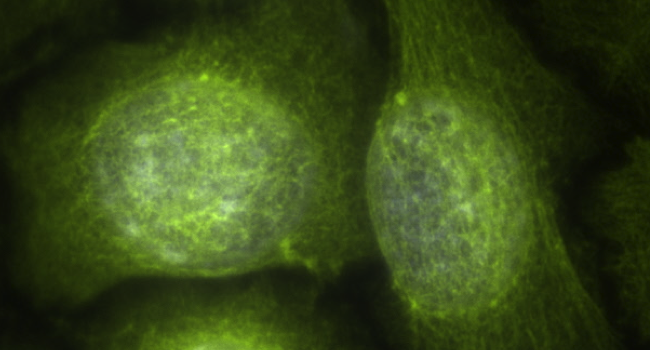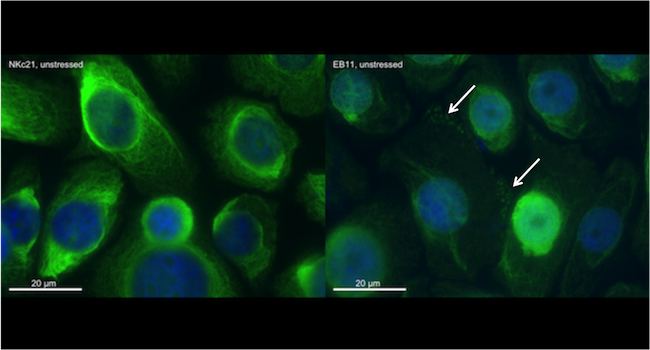Keratins
Investigation of keratin functions in skin physiology and pathology
Keratins are the most prominent proteins in the epidermis. They are expressed in pairs (type I/type II keratins) which polymerize to build the intermediate filament cytoskeleton providing resilience and stability to the cells. The intermediate filaments of neighbouring cells are connected via desmosomal contacts thereby integrate the tisssue. Mutations in keratins result in tissue fragility causing genetic blistering skin disorders (DEBRA international).
Cells must constantly receive and adapt to different kinds of external mechanical stimuli. The physical state of the cytoskeleton (prestress) is essential for the behaviour of a cell in the context of a tissue. In the past, the major focus in the study of the involvement of the cytoskeleton in mechano-signalling was on the actin cytoskeleton. However, the intermediate filament system emerges as another candidate signal transducer and may possibly be involved in mechanical gene regulation. Our findings that absence of intermediate filaments in the upper layers in the epidermis not only causes blistering but also leads to the degradation of nuclei supports this concept (Wallace et al., 2012).
Keratin expression is tightly regulated during differentiation, wound healing and cancer formation, but is not yet clear why keratinocytes in the proliferating basal layer of the epidermis express filaments consisting of K5 and K14, whereas they switch to K1 and K10 as they differentiate and loose contact with the basement membrane.
The current focus of our research is to investigate the influence of the intermediate filament cytoskeleton composition on mechanical signal transduction. We are using the Flexcell system and K1-, K10- and K1/K10-deficient keratinocytes as models for our studies.
Work on this project is supported by the DFG (Deutsche Forschungsgemeinschaft).


